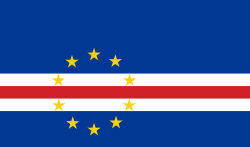Overview
One of the most important aspects of Cape Verdean culture is the beverage grogue , a strong rum made from distilled sugar cane on the islands of Santo Antao and Santiago. The beverage is made in towns such as Paul on Santo Antao and Cidade Velha on Santiago using a trapiche. A variation of the drink is ponche (punch) which is sweetened with condensed milk or sugarcane molasses. Due to the intoxication on consuming grogue, it is consumed by many Cape Verdean musicians seeking inspiration. [2]
Corn and beans are staples of Cape Verdean cuisine. [3] Also popular are rice, fried potatoes, cassava and vegetables such as carrots, kale, squash, fish and meat such as tuna, sawfish, lobster, chicken and grilled pork, and eggs. One legacy of the Portuguese on the islands is olives and Alentejo wines which are still imported. [4]
Cachupa , a stew, is considered the national dish of Cape Verde which includes mashed maize, onions, green bananas, manioc, sweet potatoes, squash and yams. Manioc balls are one of the most common in Cape Verde. [5]
Seafood dishes include bafa and búzio cabra, made from bubonian conch ( Persististrombus latus ).
In December 2002, the Cape Verdean government prohibited the killing of turtles by law, per their participation in the Convention on Biological Diversity in 1995 e a Convenção sobre Comercio Internacional de Espécies de Fauna e Flora Selvagem Ameaçadas de Extinção (CITES). [6] The dish once popular on Santiago Island named turtle steak has slowly disappeared.
Strela is Cape Verde's most popular beer. Its production began in 2006; it superseded Portuguese beers including Super Bock and Sagres (in 2009). [7]
This page is based on this
Wikipedia article Text is available under the
CC BY-SA 4.0 license; additional terms may apply.
Images, videos and audio are available under their respective licenses.






